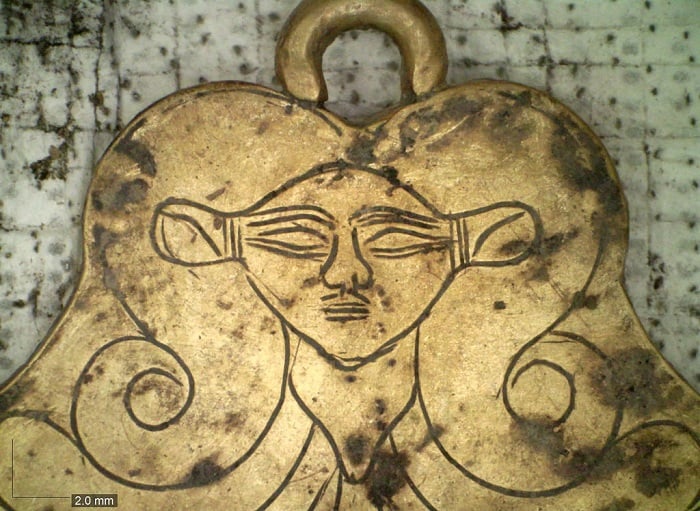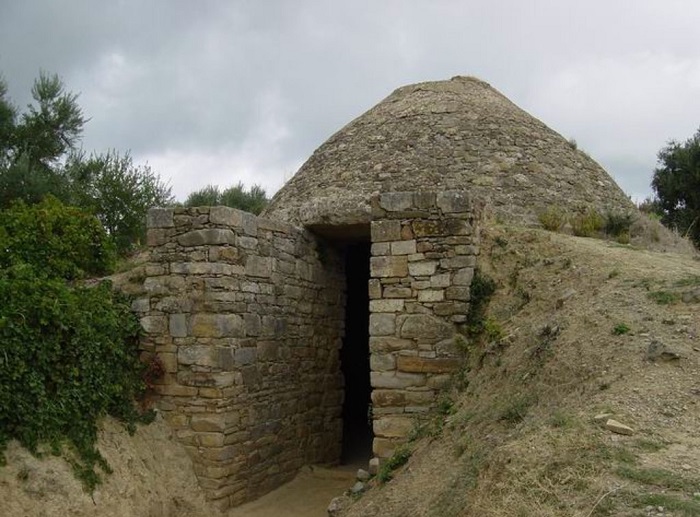Two American archaeologists announced on Tuesday that they have uncovered two magnificent tombs at the site of the ancient city of Pylos in southern Greece, which belong to a period known as Late Helladic IIA, which lasted from 1600 to 1500 B.C.
Speaking at an event organized by the Greek Ministry of Culture, Jack Davis and Sharon Stocker of the University of Cincinnati said that the find suggests that Pylos played a surprisingly prominent role in early Mycenaean civilization.
Although the tombs had been looted in antiquity, archaeologists reported that they had recovered thousands of pieces of gold foil, remnants of the sheets of gold that had once lined the tomb floors and would have lent a spectacular gleam to the darkened chamber.
The larger of the two tombs is 39 feet in diameter and the smaller is 28 feet. Both were originally built in a beehive shape known as a “tholos,” but had collapsed.
The archaeologists also found beads made of amber, carnelian and malachite, as well as a golden pendant depicting the head of the Egyptian goddess Hathor.
These items suggest that Pylos, a city with a fine port, had previously unknown trading connections with Egypt and the Near East around 1500 B.C.E., the time the tombs were in use.
See all the latest news from Greece and the world at Greekreporter.com. Contact our newsroom to report an update or send your story, photos and videos. Follow GR on Google News and subscribe here to our daily email!





